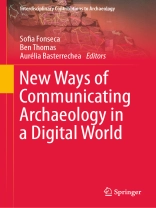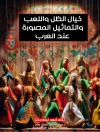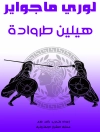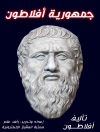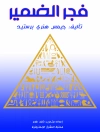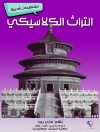This book examines the communication and interaction between archaeologists and the non-archaeological public in a digital age. Moving beyond traditional methods, the book focuses on communication through new (You Tube, MOOCs, TEDx, etc.) and alternative media (virtual and augmented reality, video games, comics, etc.) that connect a traditional archaeological world to a modern digital one. By featuring case studies that make this point, the volume argues for the need to integrate new technologies and media like online education, storytelling, podcasting, and augmented and virtual reality into archaeologists’ efforts to communicate their work to the broader society.
Drawn from a session at the European Association of Archaeologists Annual Conference in 2018, the book was expanded and enhanced by the inclusion of presentations from the 2020 conference and additional invited papers. The volume presents a variety of approaches to archaeological education that highlight the need for creativity and resourcefulness in re-thinking archaeological presentations in a digital and virtual environment. This volume is of interest to archaeologists, as well as researchers and practitioners in museology and heritage and serves as a guide for archaeologists interested and involved in the world of non-academic communication. This book invites the reader to be part of a movement that is redefining the dialogue between our past and the future of communication, learning, and digital storytelling.
Daftar Isi
Dedication.- Acknowledgements.- About the book.- Chapter 1. Introduction: From In-Person to Virtual: Archaeology Moves Online (Sofia Fonseca, Aurélia Basterrechea, and Ben Thomas).- Part I: Traditional and New Media: Different Ways of Communicating Archaeology.- Chapter 2. Why Archaeology Matters? Digging up Archaeology’s Role in Modern Societies (Sofia Fonseca and Jörg Linstädter).- Chapter 3. Ullastret 3D: Communicating an Archaeological Site to the Wider Public through Storytelling, Immersion, and Virtual Reality (Albert Sierra, Ferran Codina, Gabriel de Prado, and Isis Ruiz Soler).- Chapter 4. A Video Game-Based Learning Approach to Archaeological Knowledge. The Case of ‘Ancestors: Stories of Atapuerca’ (Xavier Rubio-Campillo and Jaume Mayans).- Chapter 5. A Historical Approach to Public Representation of Preventive Archaeology: The Case of the Regional French-speaking Press of Switzerland (Raphaëlle Javet).- Chapter 6. The Digital Evolution of Interpretation and Destination Development at Archaeological World Heritage Sites: The Example of the Augtraveler Platform in India (Fergus Mac Laren and Pankaj Manchanda).- Chapter 7. ‘They Move!’ New Ways of Engaging Rock Art with Visitors at the Coa Museum, Portugal (António Batarda Fernandes, Pedro Daniel Pereira, Thierry Aubry, and André Tomás Santos).- Part II: Sensitizing and Engaging the Public: The Role of Online Learning in Archaeology and Heritage Education.- Chapter 8. From Interactive Digs to International Archaeology Day and Listening Sessions: Engaging Audiences through the AIA’s Virtual Programs and Digital Outreach (Ben Thomas and Meredith Langlitz).- Chapter 9. Discovering the Past of Switzerland Through Archaeological Sites, an Archaeotouristic Project Using Digital Communication (Aurélia Basterrechea).- Chapter 10. From Ancient Corinth to Every Corner of the World: Teaching Archaeology Through Virtual Field Trips and Flipgrid Topics (Eleni A. Gizas).- Chapter 11. Design for Science. A Cross-Disciplinary Approach to Disseminate Archaeology Online (Dominik Lengyel and Catherine Toulouse).- Chapter 12. The HERISTEM (STEM In Heritage Sciences) Project: Communicating Archaeology during the Pandemic (Jasna Vuković, Rajna Šošić Klindžić, Staša Babić and Predrag Novaković).- Index.
Tentang Penulis
Sofia Fonseca is an archaeologist specializing in African archaeology, cultural tourism, and sustainable development. She serves as a member of the Bureau of the ICOMOS Committee on Cultural Tourism (ICTC) and co-chair of the European Association of Archaeologists’ Community on Integrating the Management of Archaeological Heritage and Tourism. Sofia is the Coordinator of the Online Learning on African Archaeology and Heritage (ONLAAH) Platform, the Coursera MOOC on Archaeology and Heritage of Africa, and the ONLAAH Podcast. Ben Thomas is an Archaeologist specializing in Mesoamerica and the Maya, is Executive Director of the Society of Architectural Historians (sah.org) and an Assistant Professor in the Liberal Arts and Sciences Department at Berklee College of Music. Formerly, Ben was the Director of Programs at the Archaeological Institute of America. His interests include archaeological education, public outreach, and the preservation of cultural heritage. Aurélia Basterrechea is an archaeologist and museologist specializing in communicating archaeological and historical heritage in Switzerland. Since 2018, she has been working in close collaboration with tourism professionals to enhance the value of archaeological sites located in an Alpine context. With an interest in history outreach, she organizes excursions and workshops for children, offering immersive experiences to explore Switzerland’s past.
